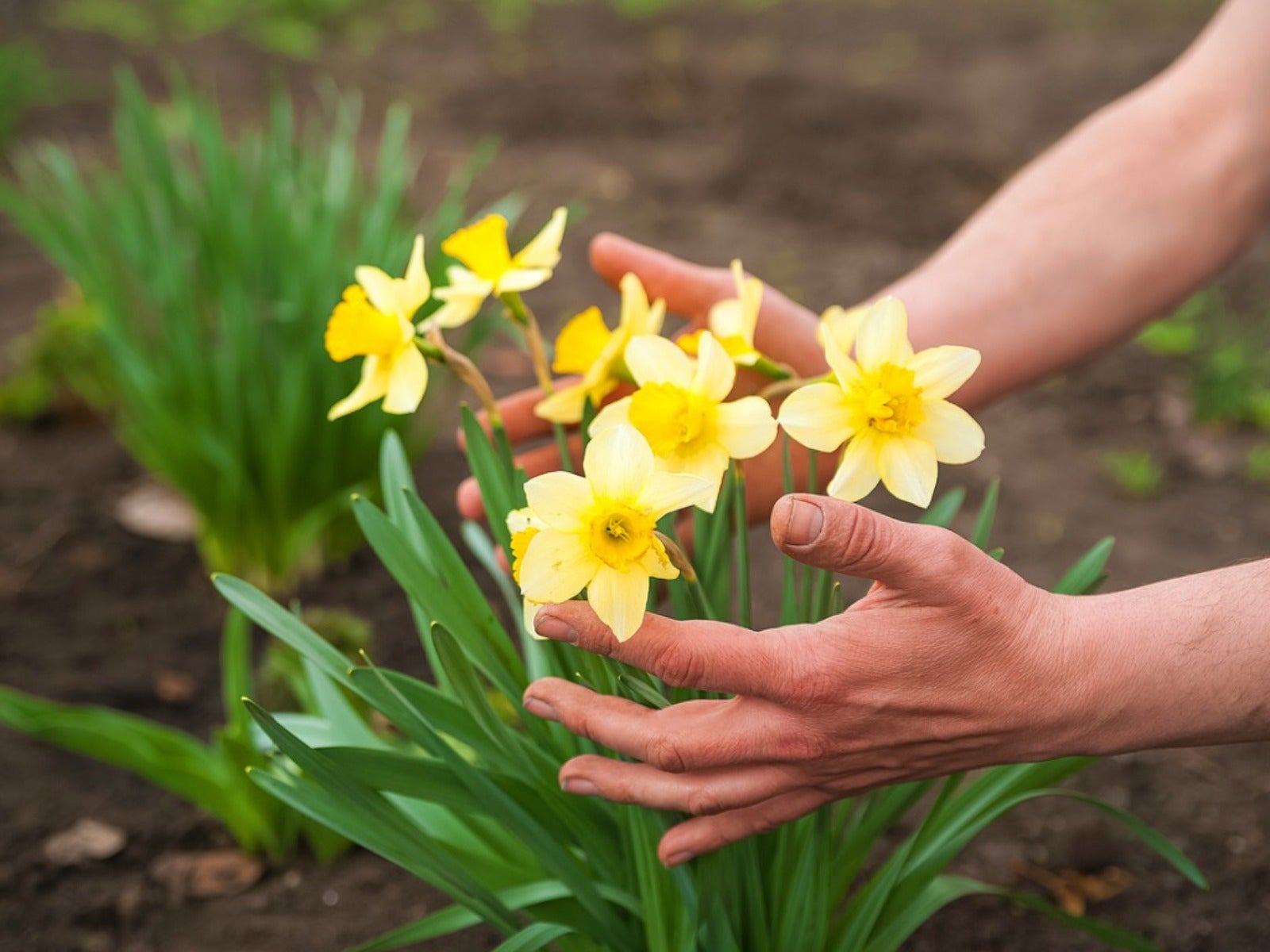
Daffodils are one of the earlier spring bulbs, rising up with their cheerful, yellow heads long before other plants blossom. Once the flower is spent; however, what should you do with the leaves? Some people tie up daffodil leaves after the bulb has flowered, while still others opt for braiding daffodils. Which is correct, and is either method a good idea? Read on to learn what, if anything, to do with daffodil leaves after bloom.
Should you Tie Daffodils after Flowering?
Daffodil blooms stay perky and colorful for around four to six weeks. After that the foliage becomes less erect and eventually begins to yellow.
While the plants might look less than tidy, the time period between flower fade and cutting back of the foliage is crucial. During this time, the bulb absorbs energy through the leaves via the sun. This energy is then used the following year to produce bloom and foliage.
So, if you decide to cut off the foliage right after the bloom fades, you aren’t giving the plant a chance to replenish its energy. The result will be a bulb that doesn’t bloom the following year.
What about braiding the foliage or tying it back? While this might make the plant look tidy in the garden, again, it is interfering with the bulb's ability to replenish its food source. So, if you want to have gorgeous daffodils, allow the foliage to die back on its own and then cut it back.
Ideally, the pros say not to touch the foliage until July 4th by which time the plant has absorbed sufficient energy. By then, the foliage will have turned brown, which is about eight weeks after the bloom fades. To cover unsightly foliage, plan to plant perennial plants 3 to 6 inches (8-15 cm) from the bulbs. As the foliage dies back, the perennials will grow, effectively screening the unsightly leaves.
Daffodil Care Post Bloom
Once the blooms fade, remove or deadhead them. This way the plant won’t have a chance to produce seed, which sucks up energy from the bulb that might otherwise be stored for the successive year of blooms.
Sign up for the Gardening Know How newsletter today and receive a free copy of our e-book "How to Grow Delicious Tomatoes".
Apply a balanced fertilizer after the blooms fade or as soon as you start deadheading. Balanced means a fertilizer that has equal parts nitrogen, phosphorus, and potassium.
After the foliage has died back, you can dig the bulbs up to move or store them, if you like. Once dug up, brush the soil off gently and allow it to dry in a cool, dark, airy area. Lay the bulbs out in a single layer with space between them.
Once dry, remove any offsets (bulblets) which will then become new plants the following year. Discard any damaged bulbs. Store the dried bulbs again in a cool, dark, dry location until planting time in the fall.

Amy Grant has been gardening for 30 years and writing for 15. A professional chef and caterer, Amy's area of expertise is culinary gardening.
